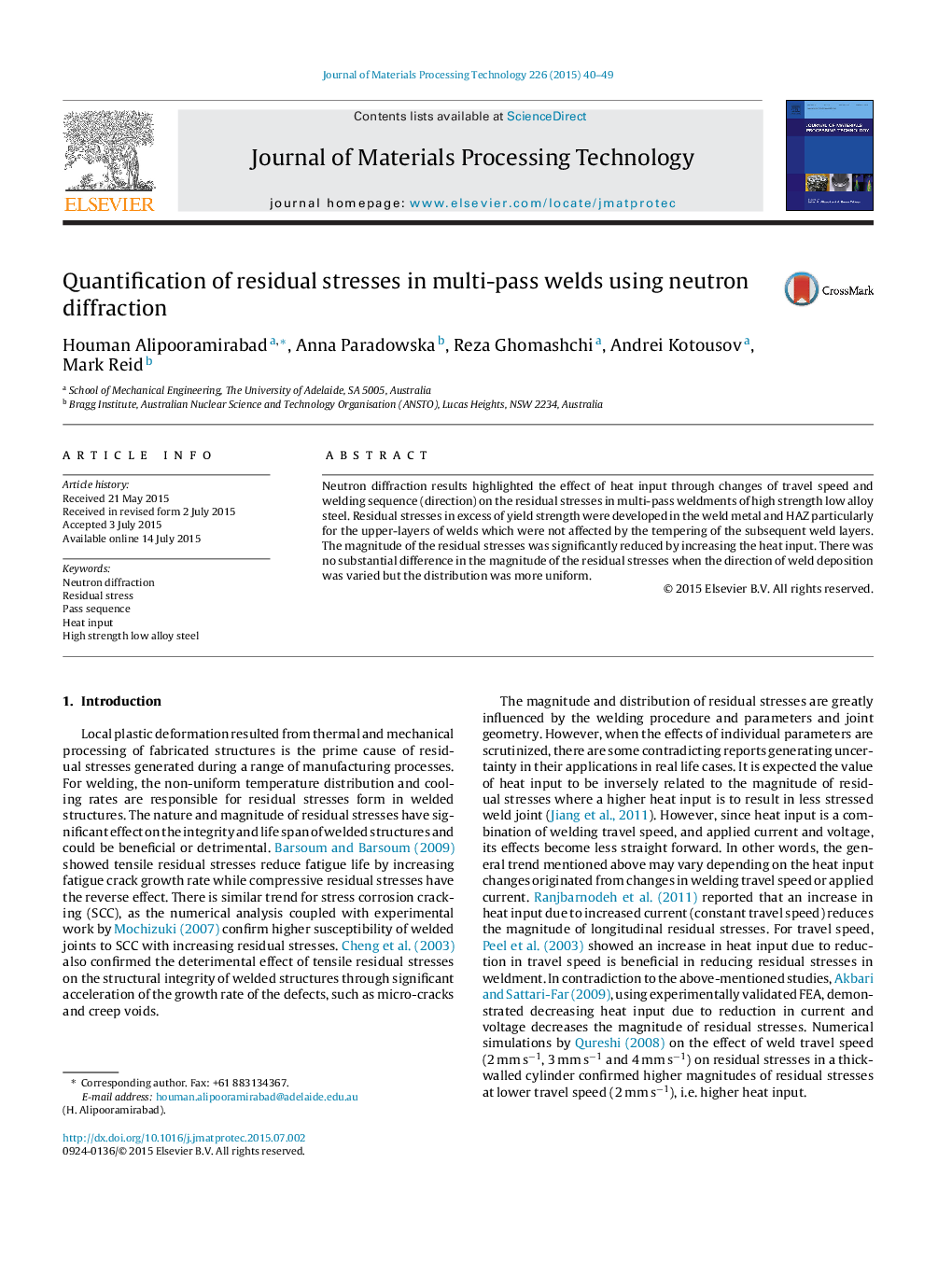| Article ID | Journal | Published Year | Pages | File Type |
|---|---|---|---|---|
| 794648 | Journal of Materials Processing Technology | 2015 | 10 Pages |
Abstract
Neutron diffraction results highlighted the effect of heat input through changes of travel speed and welding sequence (direction) on the residual stresses in multi-pass weldments of high strength low alloy steel. Residual stresses in excess of yield strength were developed in the weld metal and HAZ particularly for the upper-layers of welds which were not affected by the tempering of the subsequent weld layers. The magnitude of the residual stresses was significantly reduced by increasing the heat input. There was no substantial difference in the magnitude of the residual stresses when the direction of weld deposition was varied but the distribution was more uniform.
Related Topics
Physical Sciences and Engineering
Engineering
Industrial and Manufacturing Engineering
Authors
Houman Alipooramirabad, Anna Paradowska, Reza Ghomashchi, Andrei Kotousov, Mark Reid,
